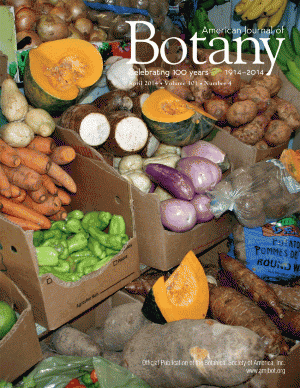The human food connection: A new study reveals more about our relationship to food

Tucked away in Hartford, Connecticut, a Puerto Rican community is creating a tropical home away from home through cuisine that is so authentic it has caught the attention of scientists. David W. Taylor (University of Portland) and Gregory J. Anderson (University of Connecticut) took a close look at the fresh crops in the Puerto Rican markets of Hartford and uncovered evidence that gives new meaning to a phrase that food lovers have been using for years: home is in the kitchen.
"Culinary preferences tell us a good deal about human culture, what is important, and what constitutes a feeling of well-being," explains Taylor. "As biologists, and specifically as botanists, what really struck us was the diversity of fresh plant crops, mostly of subtropical/tropical origin, that were available in ethnic markets in the northern U.S."
Like their ancestors who traveled from Europe, Africa, and Asia with favorite plants in tow, the Puerto Ricans of Hartford have maintained cuisine as an important component of their identity. Such a strong relationship to food has had a profound impact on human health by reshaping environmental biodiversity, influencing the diets of neighbors, and preserving elements of culture.
"The similarities between the market foods in temperate Hartford and tropical Puerto Rico demonstrate the great cultural value that the Puerto Rican community places on its cuisine—which they have recreated after moving to a climatically, culturally, and agriculturally different environment," Anderson explains. "This shows that everyone has a commitment to cultural foundations, and food is one of the most important."
Over the course of nearly two decades, Taylor and Anderson carefully and patiently measured the diversity of crops in the marketplace, their availability over time, the proportion of market space dedicated to each, and the willingness of consumers to pay for preferred items. The study, published in the April issue of the American Journal of Botany, includes the analysis of nearly 100 tropical crops and offers a new approach to understanding their meaning.
Results showed that consumers were often willing to pay more for culturally significant crops despite the availability of less-expensive nutritional equivalents. Fresh starchy plants, called viandas, were the most essential food group for re-creating a sense of home. Examples include true yams, cassava, breadfruit, and malangas. Their preparation, such as fried, mashed or boiled, was also important.
These observations inspired two new scientific concepts. The first is "Culinary Cultural Conservation," or the preservation of cuisine over time and distance. The second is "Cultural Keystone Food Group," or food groups that prove to be more vital to the cuisine than others, like the viandas in this study. Taylor and Anderson designed these concepts to help scientists analyze the cuisines of different communities and draw important comparisons between them.
According to Taylor, a major challenge in the study was the long wait period. "Our first market survey studies showed what was important. By continuing these studies nearly two decades later, and 'ground truthing' them with markets in Puerto Rico, we were able to see trends and behaviors that could not be perceived with our first study alone."
In between collecting data and analyzing results, they overcame the long waiting periods by being patient, encouraging each other, and savoring the rewards of getting to know a rich culture, including the delicious cuisine.
"One of our favorite dishes was Mofongo, a meal composed of green plantain mashed to form a hollow ball that is then cooked with a filling inside." Taylor shares. "We also had a side-by-side taste-testing of the three, boiled, cultivars of yautía (yellow, white, and pink), a 'root' crop, found in the Puerto Rican markets, and the yellow was definitely the creamiest and most delicious!"
Anderson adds, "We highly recommend diving in and exploring!"
Their strong interest in plants and people is driving an impressive body of work. In addition to continuing their research in Hartford, Taylor and Anderson are investigating the market crops utilized by migrant communities worldwide. They are uncovering the foods that shape our identity and create an essential connection to home.
More information: David W. Taylor and Gregory J. Anderson. Key plants preserve elements of culture: A study over distance and time of fresh crops in Puerto Rican markets in Hartford, Connecticut, "A moveable feast" American Journal of Botany April 2014 101:624-636. www.amjbot.org/content/101/4/624.full.pdf+html
Journal information: American Journal of Botany
Provided by American Journal of Botany

















